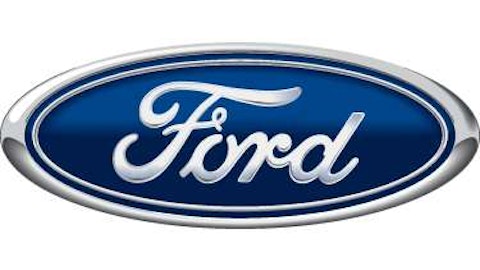(for Part I about Standard Oil and its offspring, click here).
America didn’t just lead the world in oil at the turn of the last century; it also dominated in another important facet of modern life: steel production. Like Rockefeller was to Standard Oil, Andrew Carnegie was to United States Steel Corporation (NYSE:X). A company noted for size rather than efficiency, it was responsible for 67% of steel production worldwide in 1911. It made Pittsburgh the “steel city,” and even built its own town, Gary, Indiana. A combination of iron ore ownership and a strong management style that took unions head-on made United States Steel Corporation (NYSE:X) one of the most powerful companies in early 20th century America. In its time, US Steel was so influential that it was referred to as “the Company” by Wall Street investors.
The sick man of America
Unlike Standard Oil, United States Steel Corporation (NYSE:X) still exists to this day, yet steel production as a whole has been in a steep decline. Exacerbated by increases in worldwide competition, government limits on the ability to import steel materials from other countries, and increasingly expensive union contracts, U.S. Steel is now regarded as a decrepit relic of the past.
United States Steel Corporation (NYSE:X) does have some redeeming qualities though. According to its first-quarter earnings report, the company earned $19.3 billion in sales in 2012, making 2012 the fourth straight year of sales growth, in which there was also a $38 billion gain in operating income. Unfortunately, this is but one saving grace on an otherwise horrible report card. Net income dropped by $51 million year-over year, while costs of steel production have surpassed the sale price by a net of $400,000. Other companies like Nucor Corporation (NYSE:NUE) and ArcelorMittal (ADR) (NYSE:MT) haven’t been affected as much by this, mostly because the companies are more efficient, which U.S. Steel historically hasn’t been.
This has also hurt United States Steel Corporation (NYSE:X)’s ability to produce steel. Steel production has dropped by 160,000 tons, impacting appliance, automotive, and electric steel output. In addition, increased competition, which started in 1911 during the time the Sherman Antitrust Act was showing its teeth, ate away at U.S. Steel’s profitability. Today, U.S. Steel only contributes to 10% of the world steel market, and is only the 13th largest company in the industry. It may still be kicking around, but for the most part it is largely stale, and not a pretty stock to have on one’s portfolio. Mr. Carnegie wouldn’t be too happy.
Nucor: The new U.S. Steel?
He might be happy though that there is one American company that is still a player in the steel world. Nucor Corporation (NYSE:NUE), based in North Carolina, has been gloating a bit in recent days thanks to a strong presentation to the Goldman Sachs Steel Conference in 2012. At this presentation, Nucor boasted how it is the only steel company with an A credit rating, very tough for a steel company to have now a days, as well as the most diversified product layout, with sheet and bar steel making up only 53% of production in 2012.
Also, Nucor Corporation (NYSE:NUE) is looking into the future with an investment $6.8 billion in capital expenditures since 2008, 90% of which will be going to steel mills and raw materials. The main focus of the steel mill investment is in regards to decreasing CO2 emissions by moving away from blast furnace usage towards DRI at its plants. According to company reports, this new method will lead to 67% less CO2 emissions, as well as make the steel production process cheaper by nearly $80/ton. This will give Nucor an edge over its main competitors over the next few years, especially when companies like United States Steel Corporation (NYSE:X) still depend on expensive blast furnace technology.
Steel went global
Another reason why U.S. Steel fell from grace is because of more international competition. One of the more successful foreign steel companies is ArcelorMittal (ADR) (NYSE:MT). This Luxembourgian company increased steel shipments by 4.7% last quarter to 20.9 million tons, a big turnaround compared to U.S. Steel. In addition, it beat out U.S. Steel in terms of sales with a $19.8 billion quarter, as well as adding $404 million in operating income. However, like United States Steel Corporation (NYSE:X), it still lost out in net income, reporting a $345 million loss, reflecting the challenging environment that the steel industry continues to live under.
Arcelor: Going for the goal
Fortunately for ArcelorMittal (ADR) (NYSE:MT), like Nucor, it has made a big investment in the future. In Arcelor’s case though, this has to do with a big event: the 2014 FIFA World Cup. When the crowds converge on Brazil for the big soccer tournament, they will be sitting in stadiums and using public transportation that will be 50% built with Arcelor steel. In addition to building new stadiums, Arcelor built secure fences that the company says can’t be scaled or cut through (probably will come in handy after a fortnight of protests this year).
After the World Cup is over though, ArcelorMittal (ADR) (NYSE:MT) will still have a significant presence in the country. The company is also investing money in training Brazil’s masons, builders, and steelworkers with specially designed “truck schools” that will travel the country teaching essential skills to help reduce unemployment. This will help the company stay relevant in the country after the big moment in the sun ends, but with a still growing country that will need steel for its future infrastructure, there will be a “first-mover” advantage that can be had for Arcelor if they play their cards right.
Steel: A cold market
Regardless of the various positive things I’ve said about a couple of these companies, the reality is that steel is still a bearish industry. Nucor may be the better of the three stocks thanks to a low P/E of around 12 and a fairly decent 3.4% dividend yield, but with a low profit margin of around 2.5%, it is a company that isn’t immune to the perils of the steel industry. Likewise, ArcelorMittal (ADR) (NYSE:MT) is just starting to turn a profit, since it has no trailing P/E, and will operate with profit margins at -5.1%, owing to a 13% decrease in quarterly revenue growth. It may see a turnaround during 2014 thanks to its Brazillian investments, but for now it’s not a solid investment opportunity.
U.S. Steel isn’t much better either. Illustrious history aside, it isn’t worth the risk to get it on your spreadsheet, as the company is barely breaking even with a 0.1% profit margin and 11% decrease in quarterly revenue. It may have a cheap forward P/E of 14, but there are reasons why it is a constant sell by many analysts. The time to buy it was in 1901, and the time to sell it was 1951. Steel may have been born by Carnegie’s colossus, but its offspring are taking over.
The article A Financial Salute to America: Part II – Steel City originally appeared on Fool.com and is written by John McKenna.
John McKenna has no position in any stocks mentioned. The Motley Fool recommends Nucor. The Motley Fool owns shares of ArcelorMittal. John is a member of The Motley Fool Blog Network — entries represent the personal opinion of the blogger and are not formally edited.
Copyright © 1995 – 2013 The Motley Fool, LLC. All rights reserved. The Motley Fool has a disclosure policy.






